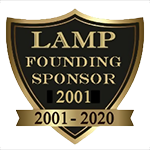eMoviePoster.com
Did You Know... that Australia has a unique size of movie poster called a "daybill" used nowhere else?Return to Did You Know Archive Added: 04/11/2016 In almost every country the most commonly used movie poster size is somewhat similar to a U.S. one-sheet in shape, and often in size as well. In some cases they can be close to "half-sheet size" around 22 by 28 inches, and sometimes in-between that size and a one-sheet, but almost all are proportioned the same as one-sheets (being taller than they are wide). There are two main exceptions, the "British Quad", which is 30 by 40 inches and has a horizontal orientation, and this will be discussed in a future "Did you know". The other is the Australian daybill, which is similar to a U.S. insert (tall and thin) and which has changed in size throughout the years (see below), but through it all, the daybill has been the most used (and most collected) Australian size, and here is more information about this unusual poster type! The word "daybill" predates its use in Australia. In the 1800s (long before there were movies), theaters in the U.S.
and England would advertise stage shows of all sorts with "handbills", which were passed out on the street (like later heralds) and with "daybills",
which were posted on poles or the like (likely they were only supposed to be posted the day of the event, which would explain the name).
After WWII, the paper shortages stopped, but instead of going back to the long daybill size, they went to 13x30, which allowed them to print "three up", getting three daybills instead of two from each sheet. Why did these catch on so well in Australia, and die out long ago everywhere else? It is hard to say! I mentioned at the start that this is "a unique size of movie poster called a "daybill" used nowhere else'. This is strictly correct, but three countries have somewhat similar posters. The first is the U.S., where the insert measures 14 by 36 inches, but those were almost always photographic and printed on heavy stock, whereas daybills are often lithos with great art, and are printed on "one-sheet like" paper stock. The other two sizes are the Italian locandina and the Swedish stolpe, both of which are similar in size to daybills, but which are fairly minor sizes in their countries. In Australia, they DID also make one-sheets, but it appears the daybills were far more popular with theaters there, and almost all of the top collectors there are primarily "daybill collectors". This is a good overview on this topic, that is almost sure to add to the knowledge of even advanced collectors. If any of you have any additional information to share, please let us know and we will run it in a future club message! 

Postal Mailing Address:
Bruce Hershenson, P.O. Box 874, West Plains, MO 65775. (For our UPS or FedEx address, click here) phone: +1 417 256-9616 fax: +1 417 257-6948 E-mail: Contact Us Hours of Operation: Monday - Friday 8:30 AM - 12:00 PM & 1:00 PM - 5:00 PM (CST) |
|||||||||||||




